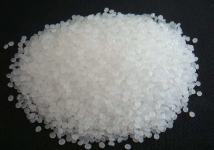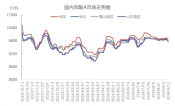read: 675 time:2025-04-07 18:44:37 from:化易天下
What’s Acetone? Acetone is a widely used organic solvent that is characterized by its strong, distinctive odor and high volatility. Known scientifically as propanone, acetone is a colorless, flammable liquid and the simplest example of the ketones family. Its versatility and effectiveness have made it a staple in various industries, including pharmaceuticals, cosmetics, and manufacturing. This article provides an in-depth look at acetone, covering its properties, uses, production methods, and safety considerations.
Acetone (C₃H₆O) has a simple molecular structure, consisting of three carbon atoms, six hydrogen atoms, and one oxygen atom. As the simplest ketone, it is highly polar and has a low boiling point of about 56°C (132.8°F). These properties make acetone an excellent solvent for many organic substances, including oils, fats, resins, and plastics. Its solubility in water and organic solvents, coupled with its high evaporation rate, allows it to be used in a wide range of applications.
The question "What’s acetone used for?" can be answered by examining its diverse applications:
Cosmetics and Personal Care: Acetone is a primary ingredient in nail polish removers and is also used in some skin care products. Its ability to dissolve synthetic fibers, such as cellulose acetate, makes it effective for removing nail polish and adhesives.
Pharmaceuticals and Medicine: In the pharmaceutical industry, acetone is used as a solvent in the preparation of drugs and vaccines. It helps dissolve certain chemicals and extracts in formulations, ensuring the stability and efficacy of the final product.
Industrial and Laboratory Use: Acetone is widely used as a cleaning agent for lab equipment and as a solvent in various chemical reactions. Its fast evaporation rate allows for quick drying, which is crucial in both research and manufacturing settings.
Manufacturing and Production: Acetone is a key component in the production of plastics, synthetic fibers, and resins. It plays a crucial role in the manufacture of polycarbonate and epoxy resins, which are widely used in electronics, automotive parts, and construction materials.
The question of “What’s acetone?” also involves understanding how it is produced. Acetone is primarily manufactured via the cumene process, which involves the oxidation of cumene to produce acetone and phenol as by-products. This method is favored due to its efficiency and cost-effectiveness. Another common method is the dehydrogenation of isopropyl alcohol, which is often used in smaller-scale production environments. Both methods are well-established in the chemical industry and are known for their high yields and reliability.
Despite its widespread use, acetone is a highly flammable liquid and poses several health and safety risks. Direct exposure can cause skin irritation, and inhalation of acetone vapors may lead to respiratory issues, headaches, and dizziness. When handling acetone, especially in industrial settings, proper protective equipment such as gloves, goggles, and masks should be worn. Adequate ventilation is also crucial to prevent the buildup of vapors, which could lead to fire hazards.
Acetone is considered relatively environmentally friendly compared to other industrial solvents. It is biodegradable and does not bioaccumulate in the environment. However, improper disposal and uncontrolled release into water bodies can still cause pollution and affect aquatic life. As such, industries are encouraged to follow proper disposal guidelines and employ methods to minimize acetone emissions.
In conclusion, what’s acetone is more than just a simple question; it opens up a comprehensive discussion about its role as a versatile solvent in numerous industries. Its unique chemical properties, diverse applications, and relatively low environmental impact make it an essential chemical in both everyday and specialized applications. Understanding what acetone is and how it is used can help us appreciate its importance in modern science, industry, and daily life.

Jincheng Petrochemical's 300000 ton polypropylene plant successfully trial production, 2024 polypropylene market analysis

The ABS market remains sluggish, what is the future direction?

Market differentiation of bisphenol A intensifies: prices rise in East China, while prices generally decline in other regions

The production method and process flow of silicone acrylic lotion, and what are the common raw materials